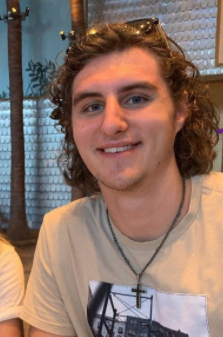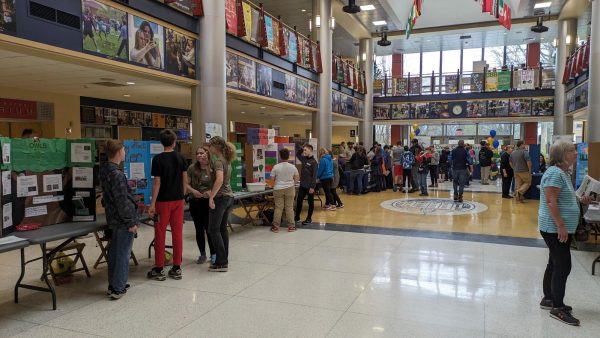Employees vaccinated, changes to functional groups
After a break from campus that rivals summer break in length, students have returned to Allegheny’s campus to complete module two of the spring semester.
The college has not let their guard down with regards to COVID-19. In order to be allowed to return to campus, students had to send in a self-administered test provided by Inspire Diagnostics and were all immediately tested again upon arrival.
Students have been given little reason to question whether the school will keep treating the virus with caution, but in efforts to inch closer to normalcy, other questions have arisen.
According to an article in the Meadville Tribune, there was an email sent on Jan. 24 by the Allegheny College Health Agency to Allegheny faculty and staff in which the school laid out its vaccination program. Those who were interested could fill out a form and receive their vaccination through the Meadville Medical Center.
Employees were told not to speak to any members of the media, post on social media or publicize about their vaccines in any way, according to the Meadville Tribune.
Prioritizing college employees has been called into question among the Meadville community, as the waiting list for vaccinations reached nearly 6,000 people around the time Allegheny employees received theirs.
Neither Dr. Gabrielle Morrow of the ACHA nor Professor Dawson responded to The Campus’s request for comment.
While the vaccine was made available to all Allegheny employees, it is currently unknown how many actually received it. About 20 students have received a COVID-19 vaccination, according to an email on Feb. 6 from the ACHA. Most of the students who have received the vaccine had access to it due to their work in the medical field.
Sarah Lipniskis, ’22, was able to receive the vaccine because of her work as a rehabilitation aide through the University of Pittsburgh Medical Center.
Her close proximity to those at risk was not just limited to work.
“I was kind of nervous about getting the vaccine since we don’t know the long-term effects, but I ended up getting it because, I felt like with my mom being at high risk, the pros outweigh the cons,” Lipniskis said.
Similarly, Anthony Maslo, ’24, was able to receive the vaccine because of the work he does in the medical field; in his case, it was required.
“It was pretty easily provided because my dad owns a dental practice and it was needed in order to continue business after it was rolled out,” Maslo said. “My brother and I got it as extensions of my father’s company because we help him out as dental assistants on weekends in emergency cases.”
The two students recalled having headaches and nausea the day following their second dose of the vaccination.
“You feel like you got hit by a train the next day,” Maslo said.
Despite the unknowns about the vaccines’ potential long-term health effects, its growing availability has given people reason to be optimistic about getting it.
“I was honestly kind of excited that there was finally a vaccine and knowing there’s a little bit of hope that this could be over in a few months to maybe a year or so,” Maslo said.
Changes are on the way according to the ACHA. The college is adopting a NCAA concept for non-athletes. The college has acknowledged that while no official athletic contests took place last semester, student-athletes were able to practice together and bypass the six feet of social distancing guidelines.
This NCAA concept is now being called “functional groups” and will change the way non-sports activities take place on campus.
These groups are composed of five to 10 individuals who frequently participate in activities together and their group must have an Allegheny employee supervise them.
The college has articulated that these groups are being made so students can be socially connected for their own betterment in a way that limits the amount of high-risk individuals they are in contact with should anyone in the group test positive for the virus.
Students can visit the Allegheny website for more information regarding functional groups.
The other major change coming to campus is the return of varsity sports.
Currently, spring sports are scheduled to compete in their regular playing season, while winter sports are set to play a limited schedule in the spring semester.
For the time being, some rules from the first semester have returned along with students for the second semester. Students had to complete a personal quarantine until receiving a negative test result from their on-campus test. Following this, students are expected to remain on campus for the duration of the school’s campus quarantine period, which will last until March 4.

Jordan Greynolds, '22, is a features editor for The Campus newspaper and it is his second semester on staff. He is a business and religious studies double...







Murray Braden • Mar 1, 2021 at 7:40 pm
Hats off to Jordan Greynolds for writing this piece and putting it in the Allegheny Campus. I , too , wondered how the Allegheny faculty , etc. were getting their second vaccine shot before many of us at-risk were waiting for our first. You seem like a kid that might have the integrity to do the right thing. Not a fan of those that asked some to shhhhh about the vaccine. What kind of message does that send? Good luck to you Jordan.